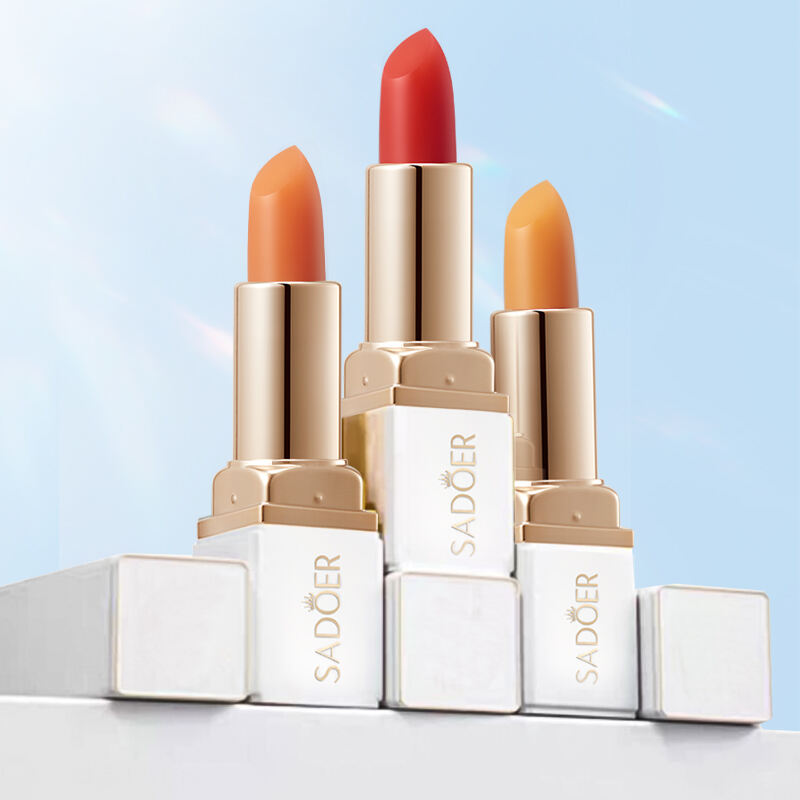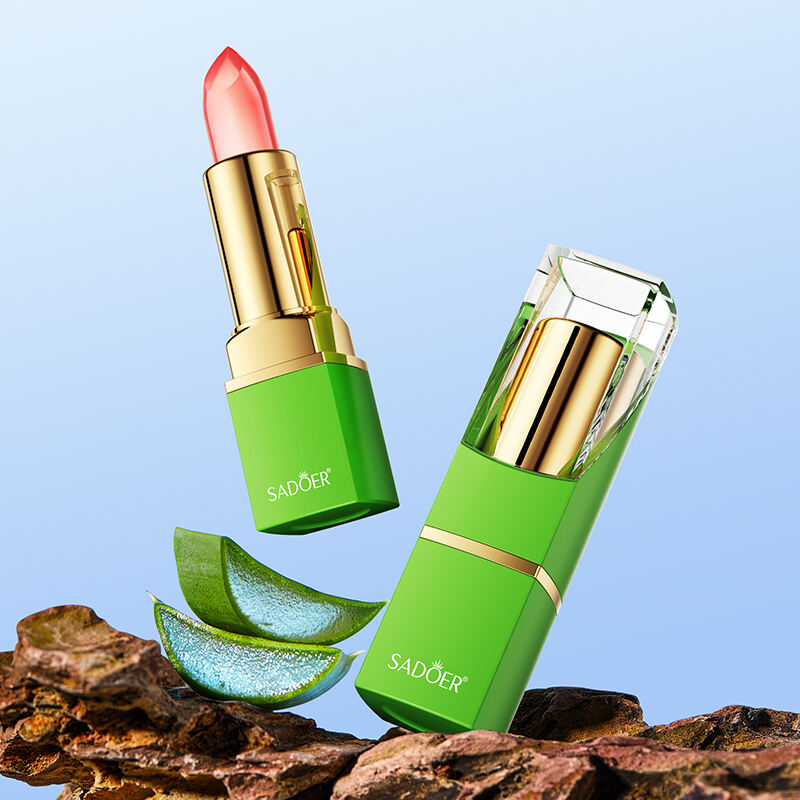Everyday Lip Comfort Starts Here
Keeping your lips soft and comfortable while still wearing color is an art many of us want to master. Lipstick is a quick confidence booster, but the wrong product or routine can leave lips dry, tight, and flaky. This guide breaks down how lipstick interacts with lip skin, which habits cause dryness, and practical steps to enjoy long-lasting color without sacrificing lip health. Whether you wear lipstick daily or only for special occasions, these strategies help you look vibrant and feel comfortable all day.
How Lipstick Dries Lips and What Causes the Problem
Understanding the ingredients that affect moisture
Not all lipsticks are created equal. Some formulas contain high levels of drying agents like certain alcohols, heavy mattifying powders, or volatile solvents that help pigments set. These components can strip natural oils from the lips, especially in matte or long-wear lipstick formulations. If your go-to lipstick sits on your lips and leaves them parched by midday, the product’s film-formers or solvent carriers are often the culprits. Choosing the right lipstick base and balancing with nourishing steps reduces this effect.
Environmental and behavioral contributors
Beyond formula, environment and behavior matter. Cold, low-humidity air and air-conditioned or heated indoor spaces accelerate water loss from the lips. Licking your lips, rubbing, or frequent reapplication of drying lipstick also damages the lip barrier. Understanding how these external factors interact with a lipstick finish helps you set up a routine that prevents prolonged dryness.
Prep Work: How to Prime Lips for Comfortable Lipstick Wear
Gentle exfoliation and its timing
A soft, well-exfoliated surface makes a surprising difference in how lipstick feels. Removing flaky skin with a gentle lip scrub allows a lipstick to adhere evenly and stops color from settling into cracks. Exfoliate lightly 1–2 times per week—never immediately before prolonged lipstick wear without replenishing moisture—then follow with hydrating treatments to restore the barrier.
Deep hydration before application
Applying a humectant-rich balm or a lightweight lip serum before lipstick creates a hydrated base. Allow the product to absorb for a few minutes so the lipstick won’t just slide off. For long-wear lipstick looks, some people apply a thin layer of balm, blot, and then apply the lipstick; this technique delivers moisture while improving color payoff and comfort when you choose a more emollient lipstick.

Choosing Lipstick Formulations that Protect Lips
Opt for hydrating formulations and modern hybrids
Many contemporary lipsticks blend color with care. Look for lipstick formulas that include emollients (like jojoba oil, squalane, or shea butter), humectants (glycerin or honey), and skin-conditioning agents (vitamin E, panthenol). These lipsticks deposit pigment while replenishing the lip surface, reducing overall dryness even with repeated wear.
Understand finishes and how they affect comfort
Matte lipsticks are prone to dryness because their finishes are designed to minimize sheen and maximize pigment longevity. Satin, cream, and hydrating liquid lipstick variants tend to keep lips more supple. If you love a matte look but suffer from dryness, try a hybrid system: a moisturizing matte or a transfer-resistant lipstick that contains conditioning agents. You get the aesthetic with fewer compromises to comfort.
Application Techniques that Minimize Drying
Layering strategies for lasting hydration
Instead of applying a heavy balm immediately before lipstick, try a thin layering method. Apply a light balm or serum, blot any excess, then apply a thin layer of lipstick. Blot again and reapply a thin second layer of color. This builds color while sealing in moisture without creating a greasy surface that pills or slips.
Use the right tools and pressure
Applying lipstick with a brush gives more control and uses less product, which reduces the need for frequent touch-ups that can dry lips. Avoid aggressive rubbing when removing or touching up color—tapping or gentle blotting preserves the lip barrier and prevents further moisture loss.
Combining Lipstick with Protective Lip Care
Overnight treatments to support daytime lipstick wear
Treat your lips nightly with a rich repair balm or an occlusive mask. Ingredients like petrolatum or heavier plant butters lock in moisture overnight, repairing microdamage that could be aggravated by daytime lipstick. Healthy lips in the morning mean your day’s lipstick application starts from a hydrated foundation.
SPF and daily protection
A lipstick without SPF leaves newly exfoliated or thin lip skin vulnerable. Use a balm with SPF under lipstick when outdoors. Sunscreen-containing balms help preserve lip health and prevent UV-induced drying or discoloration that can compound the dehydrating effects of some lipstick pigments.
Minimizing Damage During Long-Wear and Touch-Ups
Smart touch-up habits
Instead of reapplying a full layer, blot and layer a small amount of color over the center of the lips to restore intensity without building up solvents or drying agents. Consider carrying a small hydrating balm to apply lightly between major reapplications—this prevents the repeated stripping that comes from constant cleansing and re-coating with lipstick.
Removing lipstick without stripping
Use gentle, oil-based removers or cleansing balms to take off lipstick; they dissolve pigments while nourishing the lips. Avoid aggressive scrubbing or alcohol-laden removers that can sap remaining moisture. After removal, rinse and reapply a restorative balm to maintain barrier integrity.
Ingredient Deep Dive: What to Seek and What to Avoid
Beneficial components to look for in lipstick
When shopping, read labels. Lipstick ingredients that help maintain moisture include squalane, ceramides, hyaluronic acid (in low concentrations suitable for lips), natural oils (jojoba, avocado), and butters (shea, mango). These components keep lipstick hydrating and support lip health across wear cycles.
Problematic ingredients that can dry lips
Beware of high levels of denatured alcohol, drying powders, or azo dyes in older formulations. Some transfer-proof and ultra-matte systems use film-formers and solvents that can be drying with frequent use. If you love these finishes, rotate them with more nourishing lipstick types or limit wear time.
Lifestyle and Diet Factors that Influence Lip Hydration
Hydration and nutrition’s role
Hydration starts from within. Drinking water, eating omega-rich foods (like fatty fish or flaxseed), and ensuring adequate vitamin intake support skin moisture overall, including lips. Deficiencies in B vitamins and iron sometimes show up as chapped lips; addressing these underlying issues improves how lipstick and lip care products perform.
Habits that aggravate lip dryness
Mouth breathing, frequent spa or sauna sessions without protection, and certain medications can increase dryness. If lipstick repeatedly dries your lips despite good topical care, evaluate these habits and consult a healthcare provider about persistent dryness or medication side effects.
Special Tools and Products to Boost Comfort Under Lipstick
Primers and lip conditioners
A thin lip primer or conditioner designed to sit under lipstick creates a buffer that reduces pigment contact with the skin and improves wear. Choose a non-greasy primer that provides a thin film of hydration; it makes many lipsticks feel more comfortable without altering finish dramatically.
Overnight “sleeping” balms and weekly masks
Treat lips weekly with an intensive repair mask. The cumulative effect of these weekly boosts is healthier skin that tolerates lipstick better. A renewed barrier equals less pigment-induced dehydration during long days.
Quick Fixes on the Go
Emergency hydration without ruining color
If your lipstick feels tight during the day, dab a tiny amount of balm onto the center of the lips and press gently with a tissue—this moisturizes without fully removing the color. Avoid slathering balm heavily, which can cause the pigment to shift or bleed.
Preventing transfer and feathering while maintaining moisture
Use precise liner work to lock color in place and apply a thin translucent powder around edges to stop feathering. These small steps let you hydrate between layers without worrying about color migration.
Common Myths About Lipstick and Dryness
Myth: All long-wear lipstick dries lips equally
Not true. Formulation matters. Two matte lipsticks can have very different effects based on binders, oils, and emollients. Sampling and studying ingredient lists helps find long-wear options that are kinder to your lips.
Myth: More balm under lipstick means better comfort
Over-application of balm can prevent lipstick from setting properly and lead to quicker transfer or patchiness. A balanced, thin layer is usually better than a heavy coating if you want both comfort and longevity.
Seasonal Adjustments to Protect Lips When Wearing Lipstick
Winter strategies for extreme cold
In cold weather, use thicker occlusives at night and apply SPF balm in the day. Trim down harsh matte lipstick use during winter spells and favor creamier, more emollient lipstick formulas to avoid compounding dryness.
Summer and travel considerations
High-altitude flights and plane cabins dry lips quickly. Use a serum and occlusive balm prior to boarding, and choose lipsticks with conditioning agents. In humid climates, you may need fewer heavy protectants but still benefit from emollient-rich lipstick bases.
Building a Sustainable Lipstick Routine
Rotate products to reduce cumulative drying
Using the same drying lipstick daily increases the risk of chronic barrier damage. Rotate between hydrating and long-wear formulas and schedule non-lipstick days with restorative treatments to let lips recover.
Sustainable choices that care for lips and the planet
Choose lipsticks from brands that avoid harmful solvents and use responsibly sourced oils. Recycling packaging and choosing refillable lipstick systems also reduces waste without sacrificing lip health.
FAQ
How can I make my lipstick less drying without changing my favorite shade?
Apply a thin layer of hydrating balm, blot, and then apply your lipstick. Use a lip primer that contains emollients, or opt for a hybrid lipstick that combines your preferred finish with conditioning ingredients.
Is matte lipstick always damaging to lips?
Not always. Some modern matte lipstick formulas include nourishing emollients and humectants. The difference lies in formulation—some mattes are kinder than others. Rotate use and support lips with nightly treatments.
What’s the best way to remove lipstick without drying my lips?
Use an oil-based remover or cleansing balm to dissolve pigment gently. Rinse and follow with a hydrating balm or serum to restore moisture immediately.
Can lip balm under lipstick prevent drying completely?
A lip balm helps but does not guarantee complete prevention. Using the right lipstick, prepping lips properly, and following good application habits together provide the best protection.
Table of Contents
- Everyday Lip Comfort Starts Here
- How Lipstick Dries Lips and What Causes the Problem
- Prep Work: How to Prime Lips for Comfortable Lipstick Wear
- Choosing Lipstick Formulations that Protect Lips
- Application Techniques that Minimize Drying
- Combining Lipstick with Protective Lip Care
- Minimizing Damage During Long-Wear and Touch-Ups
- Ingredient Deep Dive: What to Seek and What to Avoid
- Lifestyle and Diet Factors that Influence Lip Hydration
- Special Tools and Products to Boost Comfort Under Lipstick
- Quick Fixes on the Go
- Common Myths About Lipstick and Dryness
- Seasonal Adjustments to Protect Lips When Wearing Lipstick
- Building a Sustainable Lipstick Routine
- FAQ

